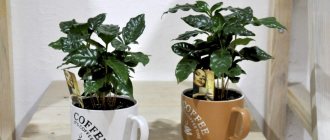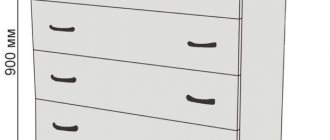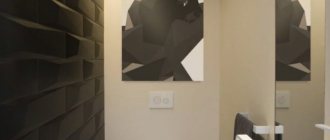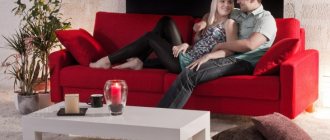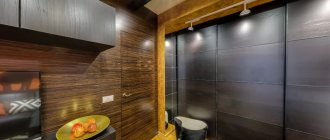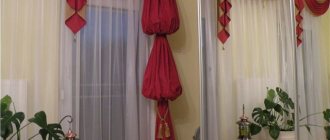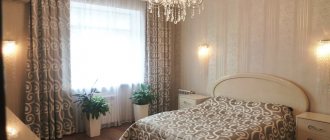When purchasing new plants for a room, few people think about how to properly arrange and combine them with each other. But thanks to correctly selected compositions, you can hide flaws or create bright inclusions in the interior. Indoor flowers in the interior
Indoor plants in the interior visually expand the room, create a special atmosphere and allow you to divide the space of the apartment.
Whether you use fresh flowers or artificial ones, they should match:
- interior and furniture;
- room dimensions;
- stylistics.
Room design with flowers
Fresh flowers in the interior of the room
How to choose indoor plants for your home
When purchasing plants for design, you first need to consider whether you can create optimal conditions and devote time to caring for them. In order for flowers to become a decoration in the interior of an apartment, they must be chosen based on the style of the room.
- For high-tech, it is necessary to purchase simple indoor plants with regularly shaped leaves pointing upward.
- If the design uses elegant furniture made of expensive wood, with elements of marble, steel, glass, then plants with distinct shapes will look beautiful.
- Lush flowering and bushy species are ideal for furniture in English and French styles.
- Camellias, azaleas, campanulas, and roses will help add a romantic mood.
- For those who primarily care about clean air, you can opt for aloe and refuse to grow lilies.
- The background plays an important role. Large-leaf varieties are suitable for wallpaper with small patterns.
- Plants that match the color of wallpaper, curtains or upholstery look very impressive.
- A black and white contrasting interior is well refreshed by bright plants.
Decorating a room with bouquets of flowers
Decorating a room with flowers
Popular plants in the interior
The most common flowering indoor plant in the home interior is the orchid. It fits into various styles, thanks to the nobility and restraint of lines, and the abundance of colors. Lovers of living decor often purchase palm trees, ficuses and monsteras. Green anthuriums and hippeastrums are also popular.
Bocarnea and yucca are often placed in living rooms and kitchens. They have a powerful stem that goes well with minimalist stylizations. In the nursery you can most often find violets and draciaeas. They can replace the ionizer, as they humidify the air well. You should not place cacti and monstera in the nursery.
Ficus with variegated foliage is very popular, as it maintains an attractive appearance throughout the year. It is unpretentious, in addition, it releases certain substances that help clean the air from bacteria and creates a good microclimate in the room. Among the flowering ones, we can highlight such popular species for the home as: stephanotis, clivia, gardenia, camellia and aechmea. With proper care, they will delight you with abundant and long-lasting flowering.
Beautiful room design with flowers
Beautiful flowers in room design
Indoor plants in the nursery interior
To ensure that the baby grows healthy, develops well, and also to create aesthetic beauty, place indoor plants in the interior of the nursery. Be careful when choosing this or that flowerpot. For obvious reasons, you should avoid cacti, as well as plants that can be poisonous, such as monstera (before purchasing, thoroughly familiarize yourself with the basic properties of a particular plant). But, familiar to everyone, ficuses, violets, dracaenas will completely replace any ionizer, qualitatively humidifying the air.
Positive aspects of landscaping
Living plants in the house absorb carbon dioxide, enrich the air with oxygen, moisturize it, and clean it of gases and dust. Green color calms and relaxes a person. In addition, flowers in pots have healing properties - they secrete phytoncides, which help destroy microbes.
And, of course, indoor plants are a natural decoration element that allows you to create a unique atmosphere filled with harmony in your apartment.
Flowers in flowerpots in the interior
Room design with flowers
Reality
In fact, the indoor plant secretes phytoncides that destroy pathogenic microorganisms . Today there are many varieties of monstera: compact, variegated, with patterns on the leaves. Most often, gardeners prefer the following types:
- Monstera deliciosa . A classic vine with perforated dark green leaves. A few years after planting, it may begin to bear fruit.
- Monstera oblique . The plant is small in size, unlike other species, has leaves with oblong holes. They may have veins of different shades, which makes the appearance of the vine even more original.
- Monstera is doubtful . The capricious indoor flower has variegated leaves, which is why it is often confused with scindapsus.
Is it possible to keep an exotic vine at home? Monstera? Of course yes. But you should know that it develops quickly, requires large areas and high humidity. Therefore, the plant is suitable for offices and hallways of large organizations.
Carefully! There is no need to place the potty in narrow corridors. The leaves are easily injured by touching; Due to drafts, they may turn yellow and fall off.
Interior decoration
If there is a lot of flora in the interior of the apartment, then you need to consider whether living plants can safely be with each other. Plants should be placed next to each other, taking into account the similarity of their requirements for lighting and watering. In addition, when creating a beautiful design, it is advisable to place flowers with different shapes, textures and leaf colors nearby.
You can arrange a classic composition in one flowerpot: at the edges there are miniature plants forming a lush border, then flora with bright large leaves, and a tall flower in the center.
For minimalist stylizations, you can choose large outdoor species: pike tail, dracaenas. The modern interior is emphasized by flowerpots made to look like steel. In the Scandinavian style, flowering flora is actively used. For such decor, pots of bright contrasting colors are an ideal option.
Beautiful room design with flowers
Decorating a room with fresh flowers
Florariums are glass vessels in which heat-loving tropical representatives of the flora grow. At the peak of popularity in phytodesign today is rutaria. Various stumps, roots and branches of trees are the basis for installing flowerpots with flowering varieties in niches made in them. This decor has a fancy shape and looks stylish and natural.
Another interesting idea is to plant a tall single flower in a floor vase filled with moss or climbing varieties.
Fresh flowers in the interior of the room
Room decor with flowers
Atmospheric Wizards
If you want to create a special atmosphere in a certain area, to emphasize its role and importance, use all the talents of indoor plants not to separate, but to create a functional accent. Indoor crops have a unique talent to play the role of an atmosphere-forming element. With the help of properly selected plants and their placement, you can emphasize that certain areas in your home are intended only for relaxation and rest, while others are for concentrated work. Plants play the role of a green psychotherapist, an element that creates a special psychological background and a comfortable atmosphere, coziness and isolation.
Most often, atmospheric plants are used in the living room. Groups of indoor plants are used here as a bright background for family communication, around upholstered furniture, a favorite sofa, places where the whole family gathers for active and not so active, but definitely joint, relaxation. With the help of your favorite green crops, they create a green oasis, as if separating the communication zone from the rest of the room, enclosing it in green “frames”.
You can create an atmosphere for communication with the help of large crops like citrus fruits, and with the help of a whole group of small indoor plants. A few plants on a table or table, placed around or next to the sofa, will help create a special atmosphere for communication and relaxation. Bright flowers and fruits, calm greenery balance each other.
Properly selected plants will help create the right atmosphere in other areas. Bright decorative peppers and citrus fruits, spicy herbs will emphasize the coziness in the kitchen. Calm, austere green crops such as ivy and sansevieria make the ideal backdrop for a study or craft corner. Hardy and easy to care for, classic plants are appropriate in a child’s room. And in the bedroom, nostalgic and beautiful blooming roses, Saintpaulias and camellias will create a special romantic atmosphere.
As plants that play the role of functional accents that emphasize the atmosphere of rest and relaxation, expressive crops are used, with calm green leaves, clean lines and bright flowers - crops that demonstrate green and cheerful colors in all their glory.
Decorative leafy stars with classic colors, but different leaf sizes and growth forms, combined in groups of 3 or more, complemented by accessories and important memorabilia, matching textiles and other decor - a classic option for a relaxation area. They are enlivened by several flowering plants. The main condition is that the plants should please you, evoke positive emotions in you, and just looking at them should bring calm and tranquility.
You should get the impression that you are surrounded by greenery, surrounded by nature, in a special corner, intended only for you and your loved ones, protected from the rest of the world. And what plants you choose - ferns, ficus, birch, ground covers, spathiphyllum, crassula or other hardy stars - depends on you and your personal taste. Preference should certainly be given to hardy, well-adapted to different lighting conditions plants from among the decorative deciduous crops.
The properties of plants are enhanced by decoration. For example, you can emphasize the atmosphere of a relaxation corner with pillows, selected napkins, family photographs, placing a service or bowl of fruit, candles, lamps, and selecting bright and expressive pots that will highlight the style of the interior. The decor is placed at some distance from the plants themselves, inside the zone. For work areas they choose strict accessories and laconic forms of pots, and for the kitchen - additional decor and various utensils used in a new way.
Indoor plants in the interior
Artificial plants
Until recently, the use of artificial plants was considered vulgar and evidenced the owners’ bad taste. After all, such decor was made from cheap materials, it had an unnatural shape and was often painted in overly bright colors. Today, good quality artificial plants are almost impossible to distinguish from natural ones. Therefore, they are increasingly used in interior decoration.
Suitable for minimalism: rice straws, jasmine or bamboo. For high-tech, you can purchase decorative flowers in muted tones; they will give the room a feeling of beauty and harmony. The main advantage of artificial decor lies in the fact that it does not require special care. Decorative flowers should be placed away from direct sunlight, as they are susceptible to fading.
Decorating a room with flowers
Flowers in room design
Impact on the environment and perception of rooms
Remember that both large and not so large indoor plants affect not only the atmosphere in the room and the mood that reigns in it, but also have a significant impact on the perception of the space as a whole. Massiveness or, conversely, visual airiness, the nature of silhouettes and lines, shape and size of foliage and inflorescences in indoor crops also cause certain optical illusions. Depending on the tasks at hand, a houseplant can be used to visually expand the space or, conversely, serve it, play with the perception of the height and width of the room.
A massive, voluminous palm tree with large leaves has an overwhelming effect on the room and requires very careful selection of placement as a solo accent. Ampels with flexible shoots hanging in hanging pots give the impression of a green cloud floating in weightlessness, visually stretch the room and make the ceiling higher, giving the space structure and expressiveness. But only if they are not placed in the foreground. Spathiphyllum bushes on the windowsill visually increase the feeling of free space, while fancy bromeliads, like almost all ficuses, suppress it.
Each, even the smallest plant, depending on whether it creates the feeling of a soft background, a weightless and airy element or a massive, “dense”, large, bulky accent, is different, but always affects the perception of the interior. When placing even one plant, not to mention a group of indoor crops, one should evaluate their impact on the surrounding space both near and inside a separate zone and from a considerable distance - the entrance to the room. Consider verticals and horizontals, mass and contours, light transmission and showiness of plants.
Indoor plants in the dining room interior
Plants in the hall
To decorate the hallway, it is necessary to use unpretentious, shade-loving living plants. These can be lush bushes or plants with strong leaves that are not damaged if accidentally touched. On the floor, indoor flowers should be placed in low, heavy flowerpots that are resistant to tipping over. Cissus, palm trees and ivy are often placed in the hall. Plants from the hallway need to be brought into the light periodically, otherwise they may wither.
Room design with flowers
Room design with flowers
Correcting errors and placing emphasis
Situations arise when some interior ideas turn out to be not entirely successful and you have to look for ways to correct them without completely redoing them. An excellent solution would be to use indoor plants. For example: empty areas of the apartment can be supplemented with one pot or you can turn an unsuccessful wall experiment into a living wall by placing many hanging and floor plantings on it, while plants from the same family will look harmonious.
Plants with an unusual shape of leaves and the presence of bright flowers will perfectly serve as a distraction from an undesirable object, or, conversely, attract the eye to successful details. When choosing a plant for a living space, you should remember that even species from the same family will look different in certain areas. Finding the right place for the potty is possible only by rearranging it from room to room until you are satisfied with the resulting option. Also, by rearranging the pots, you can radically change the interior of the room, adding new colors and shapes to it.
Plants in the kitchen
Various species grow well in the kitchen. The basic rule is not to place flowers near the stove. The kitchen has high humidity and regular temperature changes, so fresh flowers must be purchased based on these features. Miniature flowerpots with flowers look good on the table. Pots should be combined with the kitchen theme; for example, in high-tech, steel pots would be appropriate, not ceramic ones.
An interesting and practical idea is to grow fragrant herbs and spices, fruit plants (pepper, a small pomegranate or a coffee or lemon tree). Depending on the style of the kitchen, cups, saucepans, teapots, and earthenware can be used as containers.
White flowers in the interior of the room
Flowers in the interior
Take a closer look at plants - they are capable of many things
Today, indoor plants are no longer considered simply as a green background, which belongs exclusively on the windowsill or on special stands in the corner. This is a unique decorative tool that allows you to play not only with the atmosphere in the room, but also with space, visual perception, control attention, attract views, emphasize the functional purpose of zones and change the internal structure of rooms.
Indoor plants, by their mere presence, can compensate for straight lines, combine incompatible design solutions, hide flaws, emphasize advantages, and bring harmony even where the basic principles of design are violated. And indoor cultures are able to reveal these talents in the interior of any style. And in high-tech, minimalism, classics, oriental movements, baroque, nostalgic styles, modern, fusion, loft or Provençal interiors, they play an equally important role. After all, indoor landscaping in many ways offers options as varied as the use of plants in landscape design.
Plants are individual and unique. And in terms of possibilities of use in the interior, each can boast both advantages and disadvantages. Some plants, such as ferns and ficus, are ideal as a neutral green background. Others, such as bluebells, kalanchoes, begonias or calceolarias, are bright accents of color that act as a splash of color.
Architectural and strict sansevieria, cheerful bulbous, strict conifers and palms, exquisite orchids, massive hibiscus and camellias, touching saintpaulias and flexible ivies - all of them can play different roles in the design of a room. And to find the key to the ideal use of these plants in the interior, you first need to take a closer look at them themselves. And try to discern behind the beauty of the details the character and talent to change the space around you. In fact, all that is needed to reveal the talents of plants is to look at them as more than just a living decoration.
Indoor plants in interior design
Modern interior design identifies 5 main functions, or roles, of indoor plants in the interior:
- Space division and zoning
- Functional definition, creating a special atmosphere and emphasizing the purpose of individual areas
- Playing with space
- Masking in all meanings
- Creating eye-catching points and the role of living bouquets
Indoor plants in tall flowerpots
Plants in the living room
In the spacious living room, you can install large plants, for example, yucca, dracaena. You can visually expand the space with the help of climbing, small plants. Hanging baskets and florariums can decorate the living room. A miniature flower arrangement, not exceeding 30 cm, can become a beautiful table decoration.
A new trend in living room landscaping is a terrarium. The composition can be placed in any corner of the room. The terrarium looks original and gives the room a unique and inimitable look.
Decorating a room with flowers
Fresh flowers in the interior
Disguise in small and big ways
In any design there are always places that can be roughly called “visual voids”. Too large pieces of furniture, walls, surfaces of coffee, dining and coffee tables, bedside tables, shelving, niches, wallpaper inserts, despite the beauty of the materials and models used, are often perceived as not interesting enough.
Such places in which there is “nothing for the eye to catch on” are conventionally called voids. And the easiest way to fill them in the design of any room is with the help of plants. And it doesn’t matter whether we are talking about horizontal or vertical surfaces. Such empty, lifeless corners, uninteresting places can be decorated with the help of green and blooming favorites.
If we are talking about a small place in your room that seems uninteresting, then it is better to place a single, spectacular flowering indoor plant in it, a colorful accent that will harmonize with the color scheme of the interior. For large spaces and voids, it is better to use compositions of several indoor plants that are complex in structure and height, and to create entire still lifes with additional decor.
There is another similar problem that can be solved with the help of indoor plants - the need to disguise flaws or unattractive aspects, to hide them from prying eyes. Plants are the best accents to distract attention, an excellent means of camouflage. And it is not necessary to install a trellis and allow the vines to create entire green walls. Lush clumps of plants, small stands formed on the ampel support will easily cover scuffs, chips, unsightly places, imperfections in the coating or other unflattering details.
Selecting plants for a camouflage role is very simple. They should look like living sculptures, and not just bright and catchy accents. In this case, you are limited only by the requirements of the plants for growing conditions, which must be similar. Otherwise, you can decide on the most unexpected combinations and experiments, just to achieve the most interesting options.
The main thing is to remember that in compositions that should distract attention from some elements of your interior, you need to play on contrasts. Combine tall and short, miniature and large plants, combine crops with large and small leaves, playing with textures, different shapes, silhouettes and character. Seasonal accent plants displayed in a row in identical containers, play on horizontals and verticals, figured supports and strict crowns or elongated lines are always relevant.
The role of indoor plants as distracting elements can always be enhanced with the help of additional decor. In the case of masking or filling, it is better if accessories and textiles present the seasonal features of the interior and emphasize the details. In camouflage, it is appropriate to use both large, elegant accessories and small, so-called loose decor, which draws attention to the plants themselves and enhances their “camouflage abilities.”
Houseplants
Plants in the bedroom
Outdoor plants in stylish flowerpots fit harmoniously into the spacious bedrooms. Miniature roses or violets are suitable for rooms in country or Provence style. It is not advisable to overload the bedroom with an abundance of flowers, especially those with a strong scent. It is better to avoid lilies and ferns, as they “steal” oxygen.
A trend in bedroom landscaping is to grow essential greens. You can fill the room with a pleasant aroma by planting myrtle, mint, tea tree or oleander. Lavender will help overcome stress and insomnia.
Room design with flowers
Decorating a room with flowers
Photo gallery: flowers in the living room interior
The following is a selection of interiors, the basis of the decor of which is indoor plants.
Indoor flowers in the bathroom
Flora is installed in the bathroom, which loves high humidity, twilight and warmth. If there is no window in the bathroom, it is recommended to install a phytolamp.
Flowers in the bathroom create a cozy, unusual atmosphere, but at the same time they can create a number of inconveniences. In a small bathroom, flowers can be placed on shelves or in hanging flowerpots. This placement option does not clutter up the space, fills empty spaces, and the flowers do not interfere. In large bathrooms, tree-like flowers and not lush plants would be appropriate. The flora placed in the bathroom must be treated very carefully. You cannot place flowers on a bathtub, washing machine, sink or near a shower stall.
Beautiful bouquet in the interior of the room
Flowers in the interior of the room
Flowerpot in the interior
A chic assortment of indoor plants provides the opportunity to beautifully decorate any room. Each view reveals itself completely differently depending on the background, incident light, neighboring colors and the overall interior. The main advice is to use your imagination, because first of all, you should like the flowers in the interior of the apartment. If you don’t know where to install the container, you can experiment with its location, and the most suitable place will appear on its own.
Monstera - a fashion trend in the interior
Modern trends in interior design
Today, large-leaved plants are very popular for indoor use. They are planted in pots, tubs, and cut leaves are placed in vases. Decorating rooms with botanical drawings and floral patterns is one of the trends that has not left the projects of famous designers for many years. Depending on the style, you can use large, medium and small floral patterns alone or in combinations. The choice of flowers and plants should be approached taking into account the features of the interior of your home: for visual contrast with the decor or, conversely, to support the color decor in the house, on various surfaces: wallpaper, textiles, dishes, finishing materials. At the same time, you can harmoniously play on the contrasts of different shades and patterns.
Let's look at the main trends in botanical interior decor using Monstera as an example.
Monstera is one of the most popular colors in interior design. The very name of this plant contains intrigue, some hidden meaning. Monstera – translated from Latin means “miracle, wonder” and at the same time – “monster, monster”. Of course, the translation from Latin is more consistent with the monstera that decorates our greenhouses.
Monstera in the interior
Monstera leaves can be used in the interior in many ways:
- dry in a herbarium and frame;
- use as a stamp to create a pattern on the wall, wallpaper, by painting a monstera leaf on one side with acrylic paint and pressing it to the paper. You can use any colors if green does not fit into your interior;
- to create original prints. The print you like can be applied to fabric. The image of a monstera can be used to decorate curtains, pillows, bedspreads and other textiles;
- use as a template for cutting out “monstera leaves” from paper and textiles (for making napkins, panels, etc.). For example, a panel made of voluminous paper leaves. Monstera leaves cut along the contour are glued onto a white cardboard base so that their edges can be bent. To do this you will need colored paper, a monstera leaf template, scissors and glue;
- You can make voluminous applications from plywood for wall decoration. It looks voluminous and gives the room an eco-charm. There can be one or several monstera leaves in the composition, small or large. Lighting will make the wooden decor more voluminous;
- you can find in stores or make to order chandeliers, sconces, table lamps in the shape of a monstera leaf;
- place (as mentioned above) cut monstera leaves in beautiful vases and decorate with them various details of your interior.
A large tub with a palm tree or a huge ficus is not always appropriate in the interior, and there may not be room. But a cut leaf placed in a vase can live for a long time solely due to photosynthesis. All you need is water and light.
If you take a cutting with an aerial root and put it in water, it will branch, and after a while this leaf can be planted in the substrate (this is how monstera propagates with leaves. By the way, this is a good idea on how to plant monstera at home - put a leaf for propagation not in a “jar on the window”, but in a beautiful vase in the middle of the table).
Monstera: benefit or harm in your home
Monstera in the home is not only a fashion trend. This is a very useful plant.
Monstera is able to absorb formaldehydes harmful to the body, it releases biologically active substances that destroy viruses and bacteria.
Monstera leaves effectively trap dust particles, making indoor air cleaner
The plant, by releasing special substances, helps the owner to more easily endure stressful situations and provides him with a restful sleep.
Why was the monstera called a monster? Most likely, because of the size - in an adult plant the leaf reaches a meter in length. And also for its “violent temper”: in nature, striving for light, the vine leans on neighboring trees and sometimes becomes the cause of their death. Maybe that’s why the legend about a monster plant and a vampire that sucks the juices from surrounding plants appeared. In reality, of course, everything is not so dramatic and there is no mysticism. In nature, monstera, whose shoots reach several tens of meters in length, needs additional supports. And the aerial roots, wrapping around a neighboring tree, secure the vine at the reached height.
Like many indoor plants, monstera is poisonous. You should be very careful when replanting monstera, when cutting leaves from it, even just when coming into contact with this plant. You should wear gloves when working, and if necessary, wash your hands after contact with the plant.
If for one reason or another you cannot or do not want to grow a live vine, but you like this trend, you can support it through posters, textiles and even wallpaper with monstera leaves - it’s definitely fashionable!
